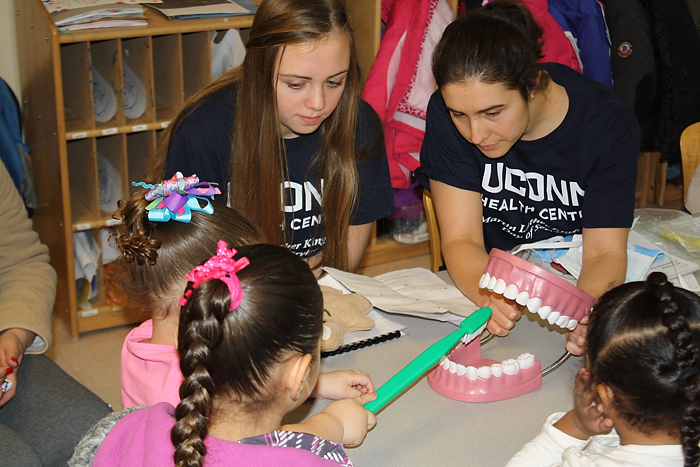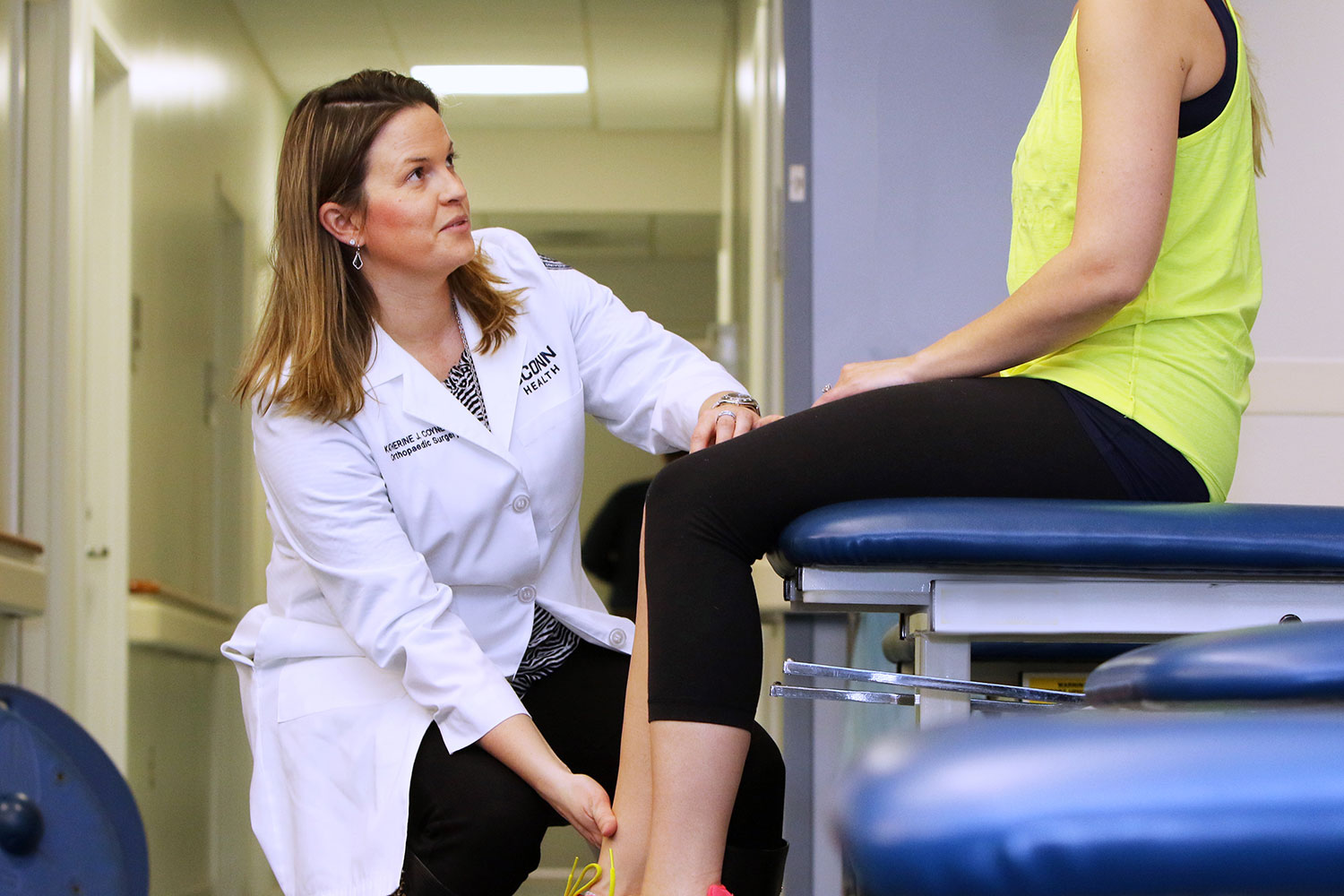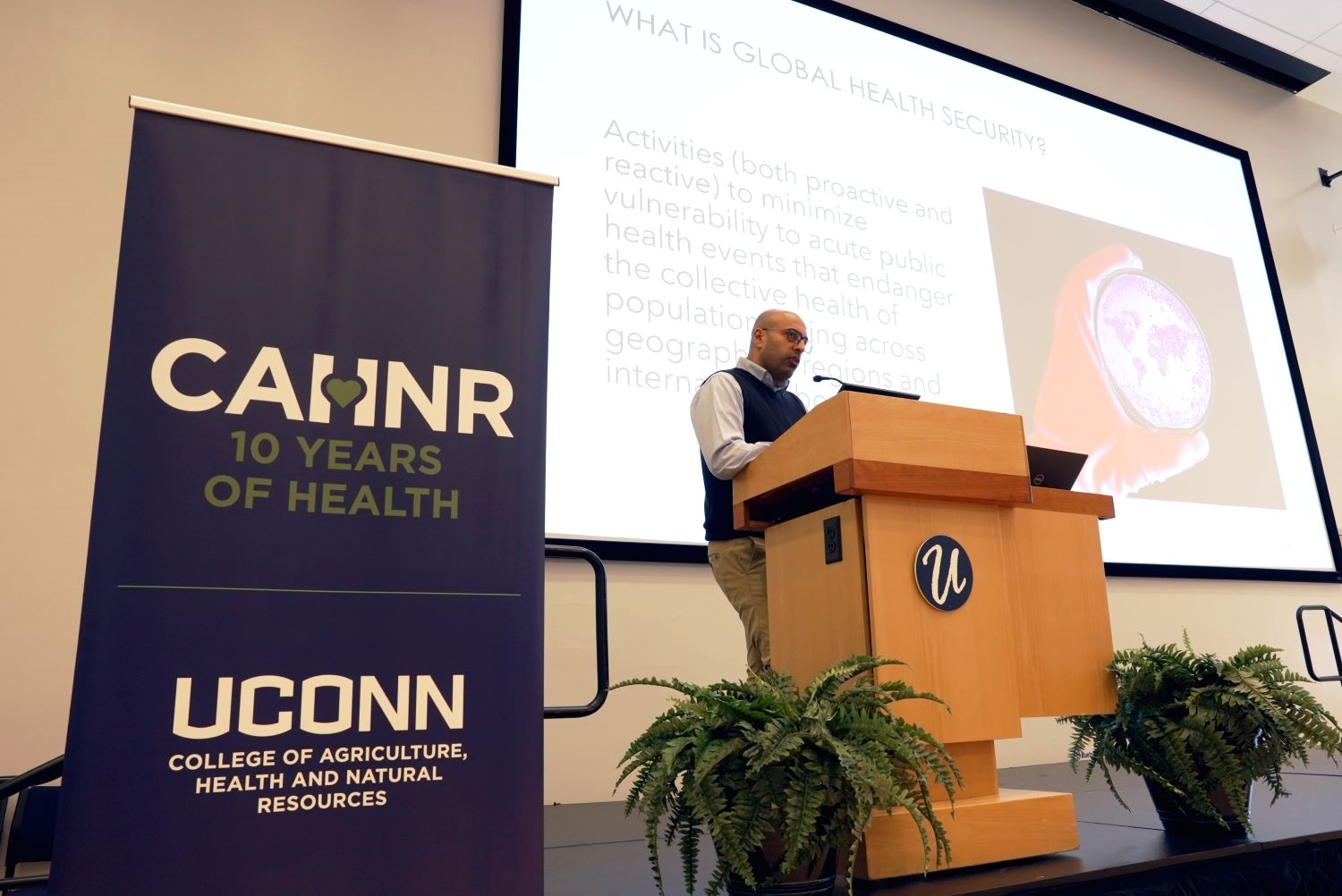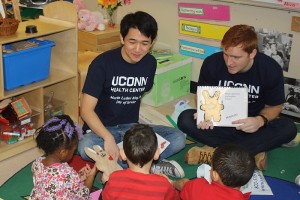
Starting this year, Urban Health Scholars are counting on a little bunny to make a big impact on children’s oral health where it’s needed most.
Health professions students – dentists, doctors, nurses, social workers, pharmacists and physician assistants in training – enrolled in the Urban Service Track (UST) are providing a new oral health education program to daycare centers and preschools in Connecticut, focusing on underserved urban areas. The Urban Service Track is sponsored by the Connecticut Area Health Education Center Program (AHEC) in collaboration with its educational partners at the University of Connecticut and Quinnipiac University.
The star of the program is Brushing Bunny, a hand-sewn toy rabbit who makes healthy decisions for his teeth in an original book created by Wensun Hui, a dental student and Urban Health Scholar.
UST students piloted two Brushing Bunny programs in New Britain and Waterbury in January as part of the UConn School of Medicine’s observation of Martin Luther King Day. More than 40 children, parents and teachers participating enjoyed the interactive program and specially designed oral health take-home bags.
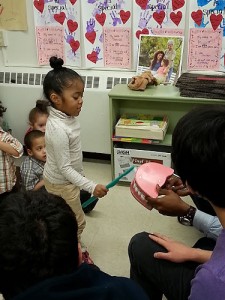
“Having a character to relate to really helped. I think that element of it really brought the kids in, rather than talking about just teeth,” said YWCA New Britain’s Parent Advocate Melissa Morosko.
UST students officially launched “Brushing Bunny” this February in honor of National Children’s Dental Health Month and the program has quickly become part of a stable of the group’s ongoing student-led community health promotion activities. In UST’s oral health offerings, “Brushing Bunny” joins “Smiling Seniors,” a well-regarded 6-year-old education program in which students give interactive presentations at senior centers about common dental issues and oral health education for older adults.
“Brushing Bunny dovetails very well,” said Claudia Odiaka, a third-year dental student who has taken part in both projects. She believes the programs do good work in reinforcing what people know but may not be practicing. “In general, both the seniors and the little kids, they shock me. They have a pretty good dental IQ. But repetition is key.”
And both communities are in dire need of that reinforcement, according to experts. Dr. Ruth Goldblatt, UConn clinical associate professor in general dentistry, said that dental issues are rampant in older adults due to a number of factors including decay from poor diet, mobility issues that inhibit the ability to hold a toothbrush, and dry mouth caused by diabetes and as a medication side effect.
As for children, though the general population has less tooth decay then it did 40 years ago, preschool aged kids have actually seen a recent rise in decay, according to the National Institutes of Health (NIH). The NIH calls tooth decay the “most common chronic disease in children.” Low income and minority children are even more vulnerable than other groups to dental caries, according to a number of studies.
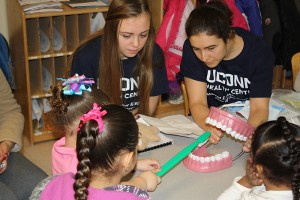
Seeing small children with major dental issues spurred UST scholar Wenhui Sun to create Brushing Bunny. In high school she volunteered at a shelter and schools in Waterbury and was startled by what she found there. “This little girl opened her mouth and a ton of her molars were stainless-steel crowned,” Sun said. The girl was one of many small children she met whose teeth were so heavily decayed that they required crowns. “All these kids did nothing wrong and it made me feel really sad – that they’re so innocent and are set up for a lifetime of bad teeth.”
Sun told UST administrators about Brushing Bunny, and after consulting with community partners to assess their interest and needs in oral health education for pre-k children, Brushing Bunny found a new home in the CT AHEC program office. Sun, now a fourth-year dental student, didn’t have time to work on the project, so she gave her blessing and materials to other UST health scholars. They, in turn, developed a robust community-based program that can be delivered in 45 minutes. The program includes not just the book, but brushing lessons and efforts to demystify the dentist.
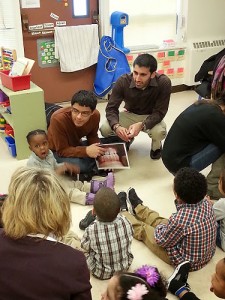
“We talk about going to the dentist and bring a white coat, dental floss, face mask and gloves to show them what goes on and get them familiar with the dentist,” said Amy Eklund, a second-year dental student who currently co-leads the sessions with second-year medical student Eileen Semancik. “For children there is that extra psychological (element), it’s not just ‘open your mouth.’ You have to be able to build that confidence and that rapport with that child. Being on their level, get them to relate.”
To help them do this, UST students spend time before an event rehearsing how they will address the children, aged 3 to 7, according to Eklund. The group includes students from a variety of health profession disciplines, not just dentistry, in an effort to teach students how to provide truly comprehensive care – to see the entire person beyond their specialty.
The interdisciplinary aspect is one that Tracey Andrews, Outreach Manager for the state dental plan for Husky Health, says is a great strength of UST. Andrews has worked with the CT AHEC on previous projects and recently discussed the Brushing Bunny program with daycare and early education staff at a conference.
“The more people incorporate oral health or understand the importance of oral health as part of overall health, the better educated our residents are,” Andrews said. “You can’t just segregate and say I’m only going to take a piece.” To date, more than 30 programs, including Head Start, have requested Brushing Bunny come visit their children.
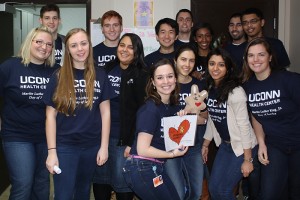
Oral health is part of overall health and good medical-dental collaboration is important to improve oral health in the nation, according to UST’s administrators. They consider Brushing Bunny a great way to get children to learn about the importance of good oral health at a young age.
For UST students, it is a good way to remind them that the “jaw bone is connected to the toe bone” and that “the mouth is an important part of the body to take care of as medical providers” said Cynthia Lord, program director, Quinnipiac University Physician Assistant Program.
Since UST’s inception in 2007, Urban Health Scholars have provided more than $250,000 worth of health promotion education and screening to underserved communities in Connecticut. In addition to oral health education through programs like Brushing Bunny and Smiling Seniors, UST provides community based programs focused on smoking cessation, nutrition, fall prevention, immunization and affordable medications education effort to make our urban communities healthier.
Follow UConn Health on Facebook, Twitter and YouTube.
